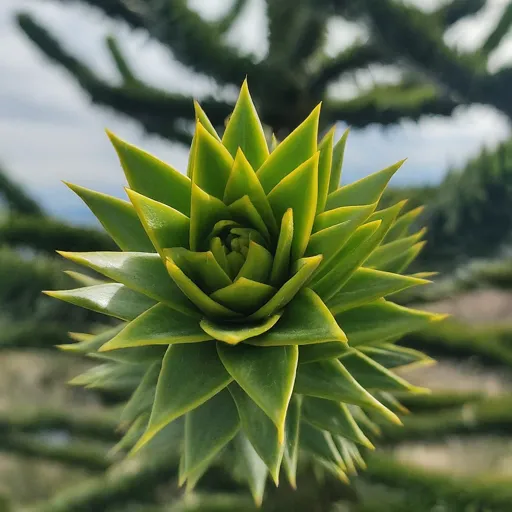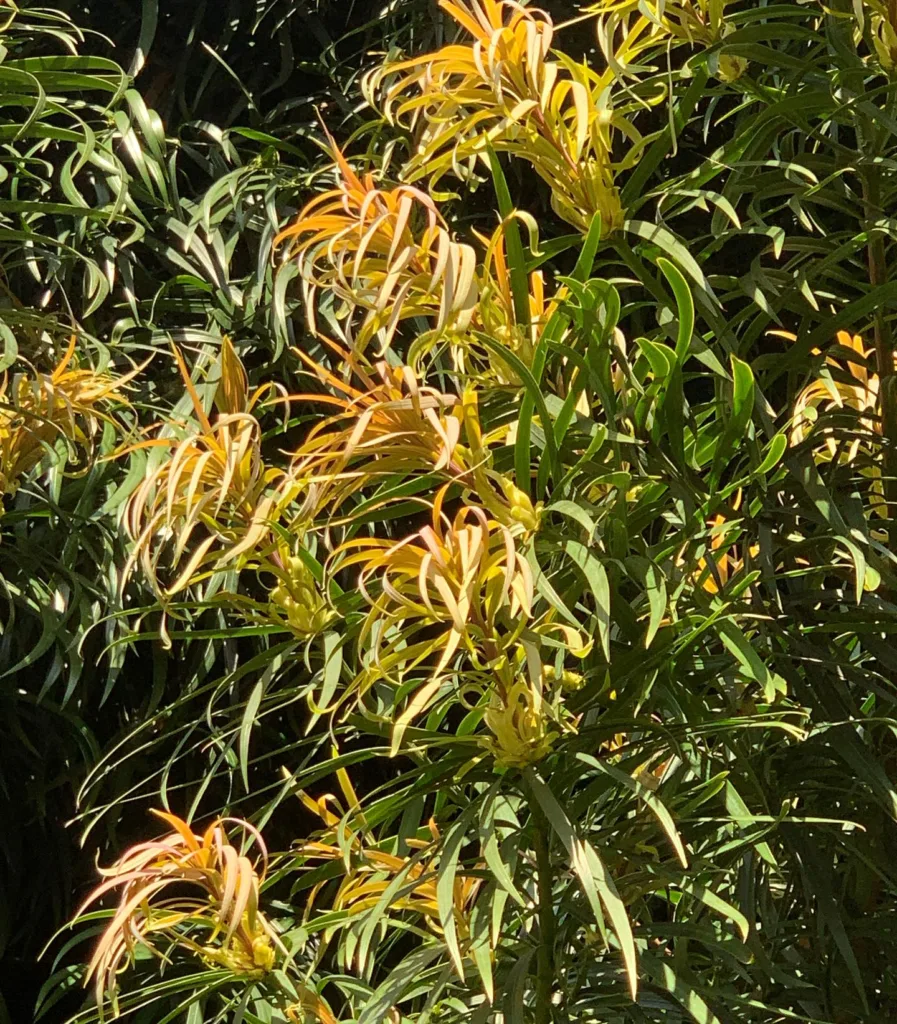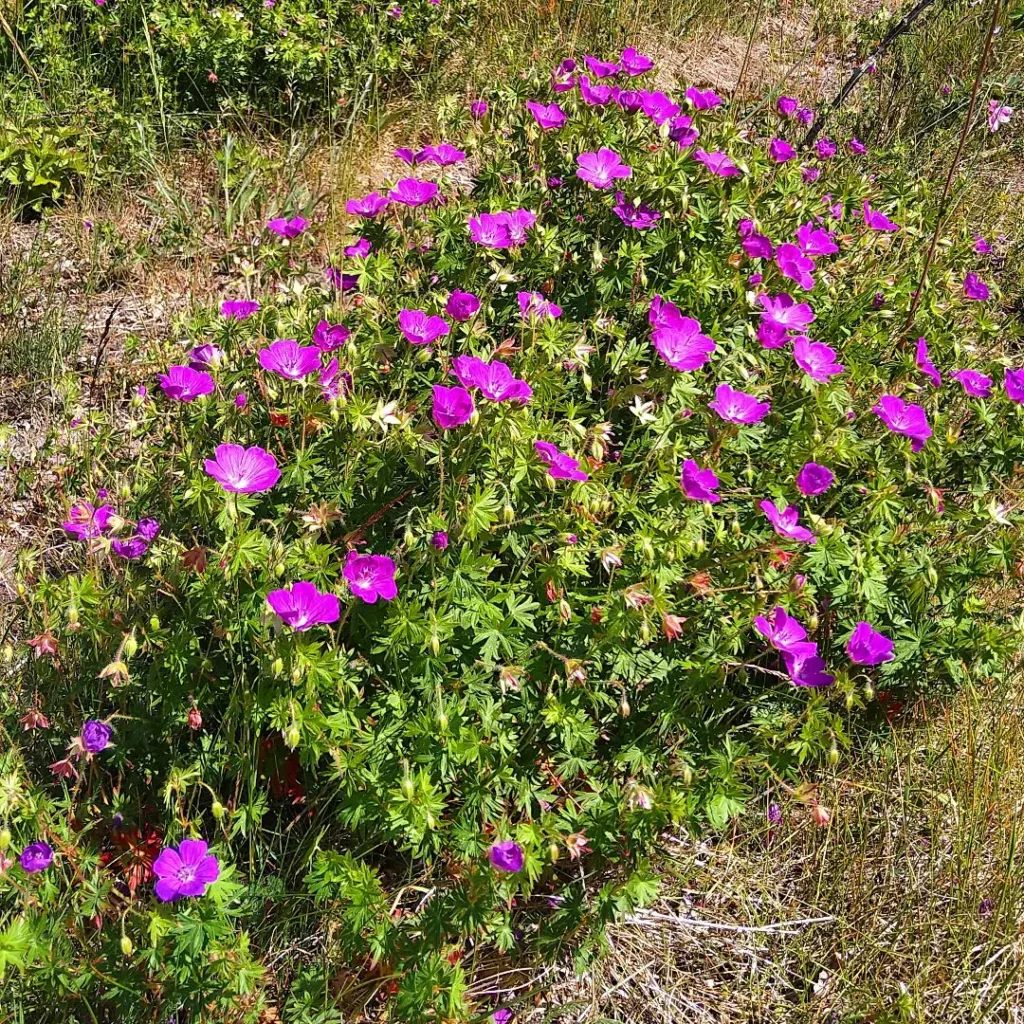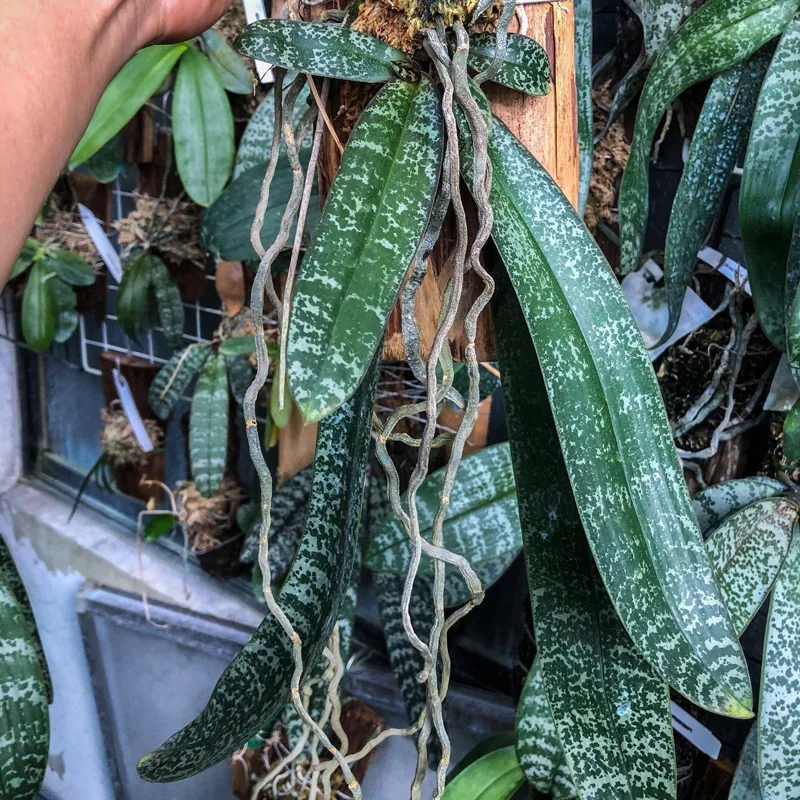
Plant Family: Aquifoliaceae – 569 Species in Genus Ilex – Holly Tree
What is Ilex Vomitoria?
Ilex Vomitoria, commonly known as Yaupon Holly, is a native evergreen shrub or small tree found primarily in the southeastern United States. It belongs to the holly family (Aquifoliaceae) and is well-known for its small, glossy leaves and red berries. The plant is drought-tolerant, hardy, and often used in landscaping due to its adaptability and attractive appearance.
How to care for Ilex Vomitoria?
Ilex Vomitoria is relatively low-maintenance. It thrives in full sun to partial shade and can grow in a variety of soil types, including sandy and clay soils. Ensure proper drainage to prevent root rot. Water the plant regularly during its first growing season to establish a strong root system. Once established, it is drought-tolerant and requires minimal watering.
How to propagate Ilex Vomitoria?
You can propagate Ilex Vomitoria through seeds or cuttings. To propagate by seeds, collect ripe berries, remove the pulp, and plant the seeds in a moist, well-draining soil mix. For cuttings, take semi-hardwood cuttings in late summer or early fall, dip the cut ends in rooting hormone, and plant them in a pot with a suitable soil mix. Keep the soil moist and place the pot in a warm, indirect light environment until roots develop.
What to plant with Ilex Vomitoria?
Ilex Vomitoria pairs well with native grasses, ferns, and flowering perennials. It can also be planted alongside other shrubs like wax myrtle or beautyberry for a natural, layered look. Its evergreen foliage and bright berries provide contrast to deciduous plants and seasonal flowers.
Can you grow Ilex Vomitoria indoors?
Growing Ilex Vomitoria indoors is challenging due to its size and light requirements. However, dwarf varieties, such as ‘Nana,’ can be grown in large pots indoors if placed in a location with bright, indirect sunlight. Regular pruning will help control its size.
Is Ilex Vomitoria toxic?
Ilex Vomitoria is not highly toxic to humans but can cause mild stomach upset if large quantities of berries are ingested. The berries are mildly toxic to pets, so it is best to keep them out of reach of dogs and cats. Interestingly, the leaves are not toxic and have been traditionally used to make a caffeinated tea.
What are the benefits of Ilex Vomitoria?
Ilex Vomitoria has several benefits. It provides year-round greenery and bright red berries that attract birds and pollinators. The plant’s leaves can be used to make a traditional tea known as “Yaupon tea,” which is rich in caffeine and antioxidants. Additionally, it is an excellent choice for erosion control and serves as a windbreak or privacy hedge.
What are common problems with Ilex Vomitoria?
Ilex Vomitoria is generally hardy but can face issues like leaf spot, root rot, and scale infestations. Overwatering or poor drainage can lead to fungal problems. Regular inspection and maintaining good air circulation around the plant can help prevent pests and diseases.
Can Ilex Vomitoria be compared to other similar plants?
Ilex Vomitoria is often compared to Ilex Opaca (American Holly) and Ilex Aquifolium (English Holly). Unlike these, Ilex Vomitoria is smaller and more adaptable to different environments. Its leaves are also smoother and less spiny, making it easier to handle. Additionally, Ilex Vomitoria’s caffeinated leaves distinguish it from other hollies.
How to prune Ilex Vomitoria?
Prune Ilex Vomitoria in late winter or early spring before new growth begins. Remove any dead, damaged, or diseased branches. For shaping, trim lightly to maintain the plant’s natural form or create a hedge. Avoid heavy pruning during the growing season to prevent stress.
Does Ilex Vomitoria attract wildlife?
Yes, Ilex Vomitoria attracts various wildlife. Its berries are a favorite food for birds, especially during winter. The dense foliage provides shelter for small animals and nesting sites for birds. Pollinators like bees also visit the small white flowers in spring.
Can Ilex Vomitoria tolerate drought conditions?
Yes, Ilex Vomitoria is highly drought-tolerant once established. Its deep root system allows it to survive in dry conditions, making it an ideal choice for xeriscaping or areas prone to water scarcity.
Is Ilex Vomitoria invasive?
Ilex Vomitoria is not considered invasive. It is a native plant in its natural range and integrates well with local ecosystems. However, its ability to self-seed and spread may require occasional management in a garden setting.
Are there different varieties of Ilex Vomitoria?
Yes, there are several cultivars of Ilex Vomitoria, including dwarf varieties like ‘Nana’ and ornamental types like ‘Pendula’ with a weeping habit. These varieties offer versatility in landscaping and can be selected based on specific design needs.
If i die, water my plants!



